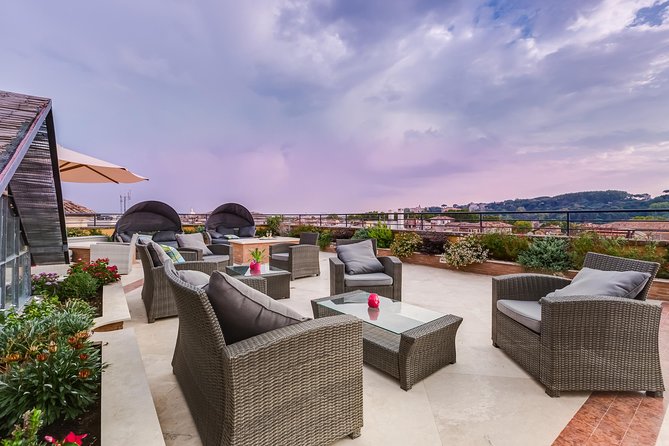Rome Tour “the center of the world” with high quality electric bicycle!
Rome, Italy
3 hours (Approx.)
Mobile ticket
Offered in: English and 4 more
Overview
With this tour we will reveal the main attractions of the wonderful historic center of Rome! You will be able to appreciate the most representative places and areas of the Capital, undisputed symbols throughout the globe of what was for a long time the cultural center and military supremacy of the ancient world. With the "Rome the center of the world" tour you can admire the majesty of the largest amphitheater ever built: the Colosseum!
What's Included
Use of bicycle
helmet
padlock
city map
seat up to 4 years
rainproof
Lunch
Departure & Return
What To Expect
Itinerary
The Roman Forum (in Latin Forum Romanum, although the Romans referred to it more often as Forum Magnum or simply Forum) is an archaeological area of Rome enclosed between the Palatine Hill, the Capitoline Hill, Via dei Fori Imperiali and the Colosseum, formed by the stratification of the remains of those buildings and monuments of heterogeneous eras which for much of the ancient history of Rome represented the political, legal, religious and economic center of the city of Rome, as well as the nerve center of the entire Roman civilization.
Admission Ticket Free
The Circus Maximus is an ancient Roman circus, dedicated to horse racing, built in Rome. Located in the valley between the Palatine and the Aventine, it has been remembered as a venue for games since the beginning of the city's history: in the valley there would have been the mythical episode of the rape of the Sabine women, on the occasion of the games called by Romulus in honor of the god Consus. Certainly the large flat space and its proximity to the Tiber landing, where trade had taken place from the most remote antiquity, meant that the site constituted, from the foundation of the city, the elective space in which to conduct market activities and exchanges with other populations, and - consequently - also the related ritual activities (think of the Hercules maxim) and socialization, such as games and competitions.
Duration: 15 minutes
Admission Ticket Not Included
The Jewish ghetto of Rome is among the oldest ghettos in the world; in fact it arose 40 years after the one in Venice which is the first ever. The term derives from the name of the Venetian district, gheto, where there was a foundry (precisely gheto in Venetian), where the Jews of that city were forced to reside; another possible etymology traces the origin of this word to the Hebrew גט ghet (pl. גיטים ghittim or גיטין ghittin), which means separation.
Duration: 20 minutes
Admission Ticket Not Included
Until the fifteenth century the square did not exist as such, and in its place there was a flowery meadow with some cultivated gardens, hence the name. According to an unreliable tradition, the square should instead be named after Flora (a woman loved by Pompey, who had built his theater nearby). [1]
The square gave its name to the long road axis known in the fifteenth century as Via Florea which connected Sant'Angelo in Pescheria with the S. Angelo bridge, passing through the current Via Portico di Ottavia, via dei Giubbonari (formerly Via Pelamantelli), Via del Pellegrino and via dei Banchi Vecchi [2]. The same route from Via dei Giubbonari to Via del Pellegrino also took the name of Via Mercatoria from the 15th century.
Duration: 20 minutes
Admission Ticket Not Included
The Trevi Fountain is the largest and one of the most famous fountains in Rome. It was built on the facade of Palazzo Poli (more properly called Palazzo Conti di Poli), by Nicola Salvi. The competition held by Pope Clement XII in 1731 had been won by the French sculptor Lambert-Sigisbert Adam, but later the task passed to Salvi (it is said that the pope did not want to entrust the work to a foreigner, but another version explains that Adam was to return to France) which began in 1732. It was completed in 1762 by Giuseppe Pannini and stylistically belongs to the late Baroque. The fountain was built with travertine, marble, plaster, stucco and metals.
Duration: 20 minutes
Admission Ticket Free
Additional Info
- Confirmation will be received within 48 hours of booking, subject to availability
- Not wheelchair accessible
- Near public transportation
- Infant seats available
- Most travelers can participate
- This tour/activity will have a maximum of 12 travelers
Cancellation policy
For a full refund, cancel at least 24 hours in advance of the start date of the experience. Learn more about cancellations.
Customers have also been looking at these Rome Tours
National Holidays
Cultural Tours
Port Transfers
Pottery Classes












